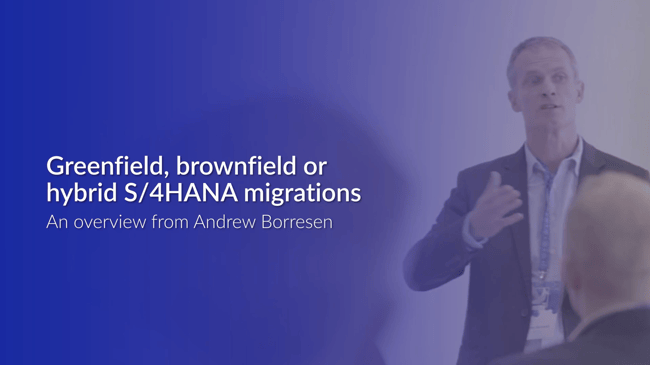Greenfield, Brownfield or Hybrid: Options when shifting to SAP S/4HANA
SAP S/4HANA® adoption is a topic that nearly all SAP clients are considering or addressing. S/4HANA is more than just a technical upgrade. An important consideration is to decide which approach is best for you when moving to S/4HANA, as there isn’t a one-size-fits-all approach. Much of the decision depends on:
- your current system;
- how much you have customised it in the past; and
- how much you want to transform and adapt your business to fit with standardised processes.
Let’s look at the different approaches and some of the considerations for each.
Greenfield:
This approach involves a new ground-up configuration and implementation of SAP S/4HANA. An (optional) Model Company shell can be used as a starting base for the configuration; only open items and balances are moved into S/4HANA. Use a greenfield approach if your current system is on an old version that requires multiple step upgrades to get to the S/4HANA platform, is heavily customised, or has poor data quality.
Greenfield approach:
| Pros: | Cons: |
|
|
Brownfield:
Brownfield is an in-situ, technical conversion of an existing SAP environment to S/4HANA. Only mandatory technical and process changes are applied. Historical data is retained, as well as all previous configuration. Custom code is remediated for S/4HANA changes and delivered into the new S/4HANA system.
Brownfield approach:
| Pros: | Cons: |
|
|
Hybrid
The hybrid option has many different names, from Selective Data Transition (SDT) to Mix-and-Match, Greyfield, or Bluefield. It is an advanced engineered solution that aims at providing you with more flexibility to change the core of your system to adapt the latest best practices while allowing you to bring the data you want to bring, as well as transforming it to fit the new system.
We partner with our sister company, EPI-USE Labs on the SDT approach that includes a clear methodology to selectively copy data with the Data Sync Manager™ LT (Landscape Transformation) Suite. We can create a new target system shell from a source SAP system. The configuration of the target system uses a mix-and-match of data from the source system, along with a new configuration. A slice of historical data (possibly from multiple source systems) is moved across and transformed to the target system.
Hybrid approach:
| Pros: | Cons: |
|
|
Which approach should you choose?
We work with our partners to support all conversion approaches. With Data Sync Manager (DSM) from EPI-USE Labs, as a core component of the process, we also give you the ability to reduce the footprint of your SAP systems by enterprise and/or time slice to deliver lean, business-aligned landscapes. Our approach results in smaller, leaner systems with increased agility for current and future upgrades.
We can help you take only the most recent history to S/4HANA, with older data (such as data required for compliance) being decommissioned to a read-only version. We have a solution available for this: our SaaS web application Archive Central allows you to view the historical data while retaining data structures and linkages.
In recent projects, we have seen that even in greenfield and brownfield conversions, there is room to do some level of SDT. In a greenfield approach, you might want to bring some Master data; or in a brownfield approach, you might want to reduce your footprint before you migrate.
How to get started?
We have a free S/4HANA Readiness Assessment that gives you key information about your current SAP data. It delivers rapid insights into:
- Functional usage (including data profiling)
- Enterprise structure
- Data quality and conversion readiness
- Enhancements, Interfaces, and Custom Code
- Technical environment analysis, including HR & Payroll, S/4HANA.
Unlike the standard SAP assessments (Simplification List, Business Scenario Recommendation, Digital Discovery Assessment), we focus on using a heuristic approach to assess your current environment, rather than evaluating against a specific target landscape (such as S/4HANA). The assessment can give you early insights so you can make more informed decisions on which approach is the best for your business.
Book your free assessment today to find out more about your options and which approach might be best for your business.



Comments